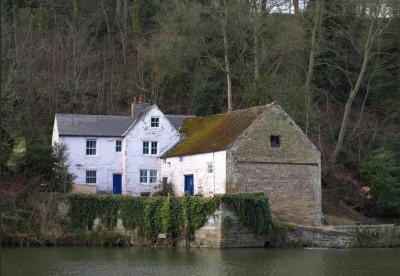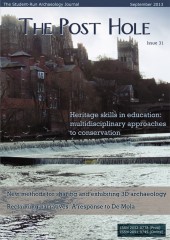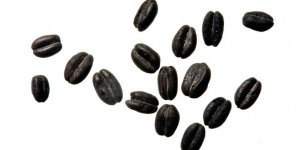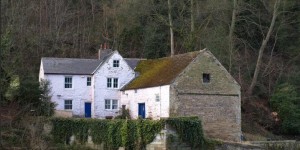The Heritage Skills in Education project: How to connect and engage educational charities, students and listed buildings in a multidisciplinary approach to conservation:
The Heritage Skills in Education project began last year, inviting teams from Durham, Newcastle and Northumbria Universities, in addition to colleges and schools, who selected a building, performed various activities in relation to a listed building’s conservation and future use. What makes this project unique is the size of the project and the explicit multidisciplinary approach; each University had a different department taking part in the project, directly bringing different views and opinions into the project. The conservation plans also involved multiple elements of different disciplines.
Additionally, the project has a community benefit; by involving the opinions of the public, the conservation plans suggest future uses for the general public, so these listed buildings may well get a much-needed new lease of life. The project is set to continue for at least two more years, giving other buildings the chance to be selected and investigated in this way.
Introduction
The Heritage Skills in Education project (HSEd) is an on-going charity project organised by the Heritage Skills Initiative (HSI), which is part of the North of England Civic Trust (NECT), an educational charity based in North East England. They actively promote the use of conservation skills in listed buildings and landscapes, particularly in relation to the use of traditional building skills and materials. In conjunction with three universities, colleges and schools from North East England, they have worked tirelessly to show participants how to select a site, how to approach conservation, what practical methods should be used, how to assess the significance of the property in its context, particularly in relation to the public’s perception of the building, and how to write this into a professional report that can be used to assess the state of the building in years to come.
This article will highlight Durham University’s take on the project, with some contributions by teams from Newcastle University’s School of Architecture, Planning and Landscape, focusing on the interdisciplinary nature of the project. While this is not a new phenomenon to archaeology, the scale of this project shows how an interdisciplinary approach can be achieved in the real world for archaeologists, while also giving something back to their local communities.
Durham University’s Department of Archaeology received an email from the NECT in the summer of 2012, inviting people to participate in the HSI project. This email was passed on to Durham University Archaeology Society, and other teams from Newcastle and Northumbria Universities had also been invited to participate. The competition element made it particularly interesting because the other teams that we were competing against were architecture and construction students, so each university was going to bring their own vested interests and specialisms to the challenge!
The teams from these universities chose various listed buildings; Durham University’s two teams chose the South Street Mill (Figure 1) in Durham and the Head of Steam museum in Darlington, while Newcastle University chose St James’s church in Benwell, Newcastle for one of its buildings, which will be included in this study. A conservation plan would then be written based on the team’s findings and presented to the owners of the properties.
Methodology
The buildings were approached in very different ways. South Street Mill, an old fulling mill that fell out of use in the 19th century but has origins with Durham Cathedral since the 14th century (Emery 1996), is today used as storage for the Durham Kayak Club. This made access inside the building difficult to commence a full survey because the kayaks fill up the space. Furthermore, large areas were inaccessible, with later wooden additions to the mill being potentially unstable and inaccessible.
A sketch of the interior and exterior of the mill was carried out with a combination of students and a professional, who had been contacted by HSI to help the teams. This was invaluable, having an experienced eye with the necessary tools to make the task of surveying much easier for the team! Being able to meet a professional within the conservation industry was a very useful experience for all involved.
As a compromise then, the team conducted a brief survey on the interior of the gable end and on the exterior north face of the building. Before this though, the team researched the history of the building from multiple sources, including Durham Cathedral library and Durham Clayport library. In addition, a survey was carried out of over 100 people from the local area, including students, which gave us this word cloud (Figure 2).
The Head of Steam team meanwhile had an altogether different set of problems. Using the resources available at Archaeological Services, Durham University a geophysical survey was conducted on the land, which had never been done before. Using magnetometry for practical reasons (i.e. it was faster), they covered 2 grids of 20x20 metres, but unfortunately found very little of significant interest. They also assessed the damage to the properties in a verbal report, and interviewed a small number of local residents to gain a more subjective opinion of the site itself.
Meanwhile, Newcastle University also sent in two teams, with one team looking at St James’s church in Benwell. Their team chose it because it is in a socio-economically deprived area, and the church is used by the local community, effectively a hub of the community in itself. The church contains the graves of famous local people including the Victorian architect Richard Grainger, whose buildings in Newcastle city centre are all designated heritage assets. The team used site elevations, photography, and asked local people who were involved in the running of the church about the building. They also conducted historical research into the building from a number of sources. They suffered from the lack of availability of team members and a lack of skills in some cases, but still found that their building had major regional significance.
In this way, each team approached each site differently, using different techniques and surveys on the buildings, producing some very intersting results; the South Street Mill for example may well still have medieval foundations, although the two surveys suggest two different starting dates for the foundations (medieval or 18th century).
Recommendations for conservation have been included in the conservation plans. For the South Street Mill, a building with a very complicated history and some severe structural faults, it was clear that any conclusion would involve a recommendation of immediate maintenance to the building. The report noted that it may be possible to have alternative uses for the mill; the survey’s major responses included “historic”, “picturesque” and “neglected” (see Figure 2). Clearly, this represents a varied scene, and somewhat reflects perhaps more on the exterior fabric of the building and the lack of information concerning the building more than anything else!
This also helped to convey to the public our work that we were doing with the Cathedral. The South Street Mill, while used as storage for the kayak club, could be converted into a café, or even be included as part of the World Heritage Site. The Head of Steam team concluded that little immediate action was needed to the museum, although it deserves more recognition for being the oldest railway shed in the world (Watkinson et al. 2013).
The schools and colleges which were involved in the HSEd projects had smaller, but no less important, tasks; secondary schools from Alston, Durham, Sunderland and Newcastle were challenged to find a historic building and assess its state of disrepair, create a model of the building, and research the careers involved in the heritage sector (Davies et al. 2013). Colleges in the area also had the opportunity to conserve buildings, using a more hands-on approach by writing a specification of works that would be used to bring the building back into use (Davies et al. 2013). These colleges in particular already ran courses in construction, so the HSEd project was a good fit for their practical skills.
Explicit multidisciplinary conservation in action
What has linked the teams together is the practical aspect of the HSEd; the university and college teams were given two to three hours of demonstration of, how to make, store and use lime mortar in historic buildings. Schools had a different set of practical demonstrations that involved other materials. Although neither team would be able to use lime mortar to restore any of their sites immediately, it gave us an idea of the many skills needed to conserve the buildings in the future; for the South Street Mill, using concrete on the stone would damage the stone and compromise its water retaining properties. In contrast, lime mortar complements these properties and it is more flexible.
Conversation in this way is also an interdisciplinary approach, needing not only the knowledge of how to build a house (construction and engineering), but how to put it up well (architecture), how to maintain it, how to recognise and research what used to be there, and its significance or importance (history and archaeology) as well as many other skills; often multidisciplinary projects like this in the real world of industry tend not to emphasise this aspect.
This is also reflected in recent university courses and projects that are offered at the International Cultural Centre for Heritage Studies (ICCHS) (School of Arts and Cultures 2013) and the Northumbria Community Heritage Project (Arnott 2011), both running independently of the North of England Civic Trust. Both of these projects have used the interdisciplinary nature of conservation to achieve different aims; the ICCHS brings the experience of galleries, museums and the heritage sector to Master students from around the world, while the latter project is aimed at discovering the history of Pandon and Newcastle, in the context of the Northumbrian Kings, by using the resources at Newcastle City Libraries and connections with local history experts and interest groups (Arnott 2011).
What makes the Northumbrian University project stand out is the skills that are sought after; anyone with skills in photography, art, media, IT and performance are being used to present the findings of the project effectively. It is a good sign of the modern age that we are appreciating our different skill sets within traditional boundaries, and how they can complement each other to maintain buildings and cultural heritage for future generations to enjoy. A multidisciplinary approach was also used in finding, analysing and presenting the remains of Richard III at Leicester recently, showing that this multidisciplinary approach, when used effectively, is a powerful tool, and is here to stay.
The St James’s team felt that the project is interdisciplinary, because their team had individuals from different disciplines, although these are mainly from architecture, town planning and urban design. They also learned new concepts as a result of the project. It can also be argued that their methodology was in itself multidisciplinary; the historical research of a property and the assessment of the significance sit next to the site elevation plans in the conservation plan.
A caveat of the approach is the effective team working skills needed to pull all the results together; each team from the different universities will come in looking at each of their projects with the vested interests of their societies first and foremost; the Durham Archaeology Society, for example, was more concerned with the history and context of their buildings than what the building was actually made out of, and where they got the building materials from! The Newcastle team meanwhile was made up of urban planners and architecture students; while there is some overlap with archaeology, their vested interests are dominantly non-archaeological.
Conclusion
Nonetheless, in summary, comprehensive multidisciplinary conservation plans have been made and will be used by Durham Cathedral, Darlington Borough Council and St James’s church, to assess their properties in years to come. Furthermore, the surveyed sites will be used for the benefit of the local community. Since the Cathedral is visited by thousands of people a year, the potential for the dissemination of the information we have collected is enormous. The project will keep going within the Durham Archaeology Society for at least two more years, looking at other listed properties. Future students will be able to participate in preserving the many wonderful historic buildings that County Durham has to offer, in a multidisciplinary approach which will make more effective use of these disciplines working together.
Acknowledgements
I would like to thank Durham University’s Department of Archaeology, in particular Dr David Petts, who sent the first email about the project; also, the North of England Civic Trust for providing this unique opportunity, particularly Kathryn Banfield, Jules Brown and Elanor Johnson, as well as the Heritage Lottery Fund and English Heritage.
The members of the teams who finished the projects include (Team South Street Mill) Jamie Davies, Rebecca Burton, Peter Brown, Joe Raine, Katie Lee-Smith, Hannah Shaw, Sam Green and Peter Ryder for his expertise; (Team Head of Steam museum) Alvin Chua, Laura Watkinson, Ester Lusty and Karl Smith. From the St James team from Newcastle University I would like to thank Alanah Honey, Caroline Grist, Rhiannon Parrett and Amy Priestley for taking the time to fill in an informal questionnaire about their thoughts on the multidisciplinary nature of the project.
I also thank the Dean and Chapter of Durham Cathedral and Darlington Borough Council for allowing access to their properties and to the Cathedral’s archives and I hope they will find our reports useful when they come to assess their properties in the future.
Bibliography
- anon. (2013) ‘Heritage Skills in Education – Schools’. North of England Civic Trust. Available at: http://nect.org.uk/hsi/heritage-skills-in-education/schools [Accessed 16th June 2013]
- anon. (2013) ‘International Centre for Cultural and Heritage Studies’. School of Arts and Cultures, Newcastle University. Available at: http://ncl.ac.uk/sacs/icchs [Accessed 28th April 2013]
- Arnott, G. (2011) ‘New Community Project Explores Northumbria's Heritage’. Northumbria University. Available at: http://northumbria.ac.uk/sd/central/pr_comms/community/cn/comm_heritage_... Standard&news=archive [Accessed 28th April 2013]
- Davies, J.G., Burton, R.M., Galt, A.H.S., Brown, P.J., Raine, J.J., Lee-Smith, K.H., Shaw, H.R. and Green, S.C. (2013) Conservation Management Plan: South Street Mill, Durham, Heritage Skills in Education, North of England Civic Trust: Durham University Archaeology Society, Newcastle-upon-Tyne
- Emery, N. (1996) Survey of the Banks Mill. Durham Cathedral Archaeology Report. 15. Durham: Durham Cathedral
- Watkinson, L., Chua, A., Lacy, R., Dutton, E., Lusty, E., Bithell, S. and Smith, C. (2013) Heritage Skills in Education: Head of Steam, Darlington Railway Centre and Museum. Newcastle-upon-Tyne: Heritage Skills in Education, North of England Civic Trust (Durham University Archaeology Society)










